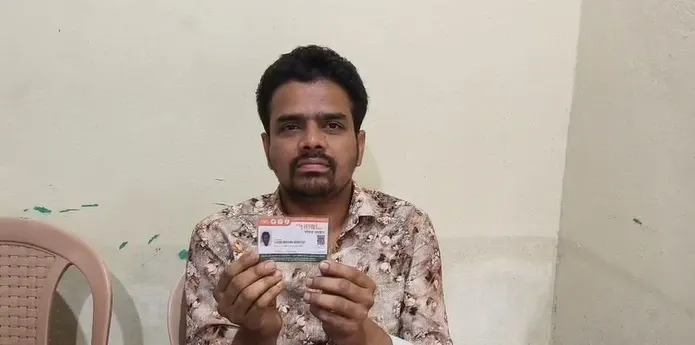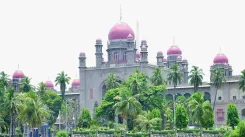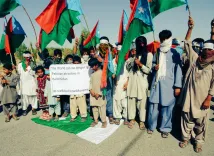Is the Ayushman Bharat Yojana Transforming Healthcare in Latur, Maharashtra?

Synopsis
Key Takeaways
- Ayushman Bharat Yojana offers free health insurance.
- Beneficiaries can access treatment at over 31,000 hospitals.
- Financial burden on poor families has been reduced.
- The scheme empowers women through accessible healthcare.
- Over 1.06 lakh claims processed since the Vay Vandana extension.
Latur, July 30 (NationPress) The Ayushman Bharat Yojana, a flagship health initiative by the Government of India, is creating a profound impact on countless lives nationwide. In Latur, Maharashtra, this scheme has been especially advantageous for women, offering them free and accessible healthcare services.
Structured around two main components — Health and Wellness Centres (HWCs) and the Pradhan Mantri Jan Arogya Yojana (PM-JAY) — the initiative provides free health insurance coverage of up to Rs 5 lakh annually to economically disadvantaged families. Beneficiaries can avail treatment at any government or empanelled private hospital throughout the country.
This scheme has significantly alleviated the financial strain of healthcare for the underprivileged, ensuring that access to medical services is not obstructed by costs. Many residents in Latur are witnessing the positive effects of this initiative firsthand.
Wasim Maniyari, a beneficiary, shared with IANS, “I availed free healthcare benefits worth Rs 50,000 under the Ayushman Bharat scheme. It’s a blessing for the poor. I thank PM Modi for this initiative.”
Sonali Gulbile, a social worker and NGO leader in Latur, highlighted the scheme's impact on women: “Women here are gaining substantial benefits from programs like PM-JAY. It’s empowering them in numerous ways. Besides Ayushman Bharat, individuals are also benefiting from various other government initiatives. We are grateful to PM Modi for these efforts.”
Launched on September 23, 2018, in Ranchi, Jharkhand, by Prime Minister Narendra Modi, the Ayushman Bharat Yojana was formulated to transform fragmented healthcare delivery into a comprehensive, needs-based approach. The scheme aims to provide financial protection to over 10.74 crore poor and vulnerable families, representing nearly 50 crore individuals, or the bottom 40 percent of India's population, identified through the Socio-Economic Caste Census (SECC) 2011.
In a significant update, the government expanded coverage to all senior citizens aged 70 and above on October 29, 2024, irrespective of their socio-economic status. These individuals are now eligible for free treatment up to Rs 5 lakh annually through Ayushman Vay Vandana cards.
This extension seeks to ensure equitable healthcare access for India’s elderly population. A unique aspect of the scheme is its portability — beneficiaries can seek treatment at any of the 31,466 empanelled hospitals (both public and private) across the nation, regardless of their residential location. Among these, 14,194 are private hospitals, providing a wide array of treatments.
To guarantee quality and transparency, the National Health Authority (NHA) has enacted stringent Hospital Empanelment and Management (HEM) Guidelines.
Since the introduction of the Vay Vandana extension, over 1.06 lakh claims have already been processed, underscoring the swift adoption and impact of this forward-thinking healthcare reform.








